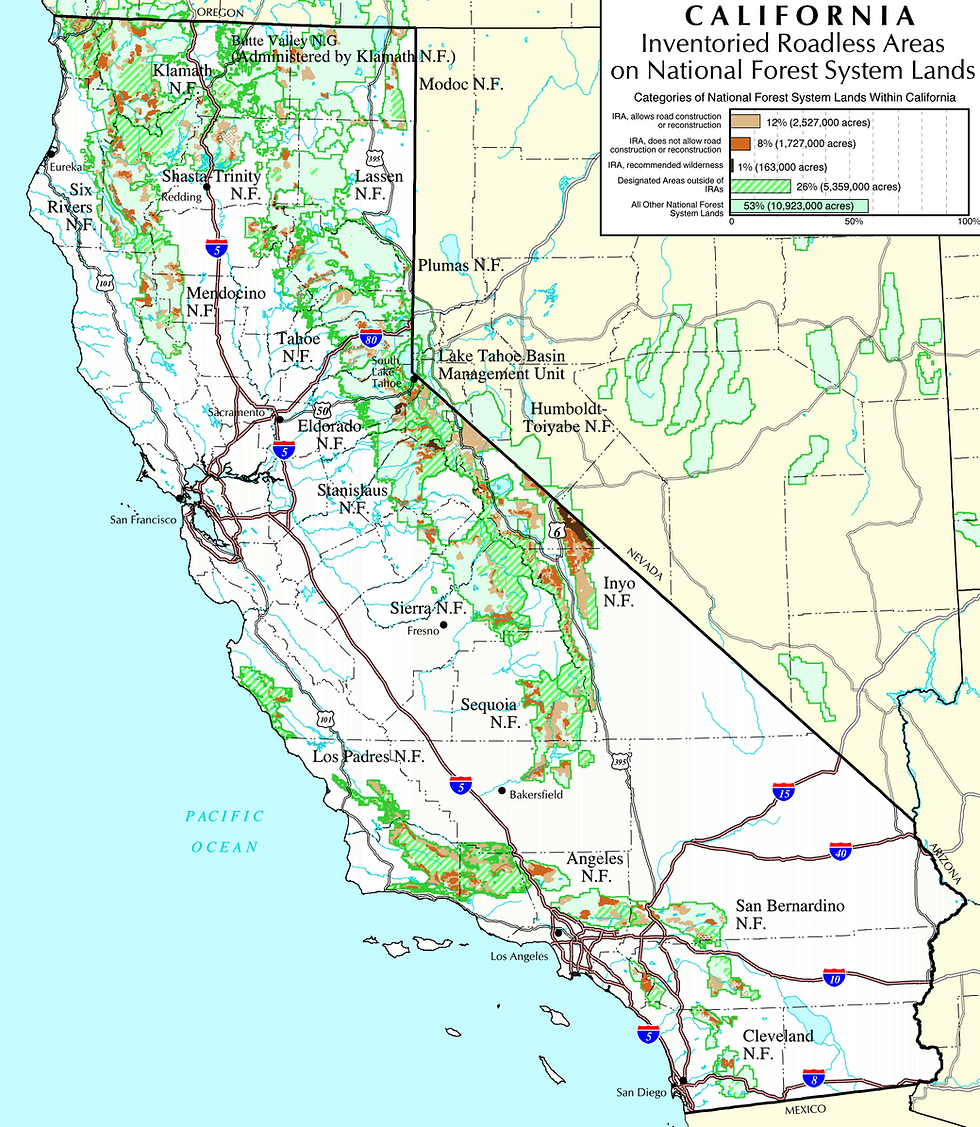Feds to Critically Endangered Humboldt Marten: You’re On Your Own
- EPIC Staff
- Oct 28, 2010
- 4 min read
Updated: Aug 28, 2023

The US Fish and Wildlife Service has written us back well before the 90-day deadline to respond to our petition to list the Humboldt marten under the federal Endangered Species Act (ESA). You can read their response here.
The agency basically says it isn’t even going to look at the petition.
Technically, within three months of receiving our petition, FWS is supposed to determine if the petition does in fact present information indicating that the species may be in trouble and a status review should be conducted. (Note: it does, and a review should be conducted, and not to kill the suspense, but with fewer than 100 individuals in a declining population, we can probably skip the next five steps too and go to the bottom line: the Humboldt marten deserves and requires protection under the ESA, as soon as possible.)
So how can FWS say that it isn’t even going to look at our marten petition? The agency claims that it doesn’t have to issue a 90-day finding (ie, state whether it’s going to start a status review) because it has no free budget for any listing-related activities in 2011. To support this claim, FWS points to court orders requiring it to address other listings.
Setting aside the obvious question whether the agency or administration might be able to find, or Congress persuaded to supply, additional funding to support additional listing efforts the law and science clearly require, this is a deeply dysfunctional and completely self-serving position for FWS to take.
Those court orders exist, after all, because FWS has for years ignored the law and refused to list hundreds of species, out of what boils down to a combination of political intimidation and institutional cowardice. In every one of those cases, the evidence of endangerment was so clear that the federal courts, always reluctant to second-guess agency action, were forced to overturn FWS’s refusal to list the species in question.
As well, it’s worth noting that this is a remarkably passive policy stance for the primary federal wildlife agency to take in the face of the sixth great extinction in the history of Earth – an extinction caused by human actions, which we in this country passed the ESA to prevent.
The bottom line, though, is that this letter tells us that it’s not just the Humboldt marten that is critically imperiled. The Endangered Species Act (ESA) itself, the law that we and all the earth’s species rely on as the last line of defense for imperiled species, is itself in real trouble. The key agencies responsible for implementing endangered species protections – the US Fish and Wildlife Service (FWS) for terrestrial species and National Marine Fisheries Service (NMFS) for ocean-going fish and marine mammals – have all but given up on moving forward to address the huge backlog of species that the second Bush Administration refused to address.
Here’s how the Center For Biological Diversity (CBD) describes the difference between how the ESA is supposed to work and how it has actually worked under the last several administrations: Under these legally binding timelines, the listing of a species should take at most two years from the submission of a petition. But despite the obvious urgency to protect species as quickly as possible, this has rarely occurred. Instead, species have experienced delays in listing in many cases lasting decades, and the majority have only been listed following litigation by the Center for Biological Diversity and other organizations. Of currently listed species in the United States covered by the U.S. Fish and Wildlife Service, 41 percent were listed only after a lawsuit was filed, 39 percent after a petition was filed, and only 20 percent solely on the agency’s own initiative. The listing of species slowed to a crawl during the eight years of the Bush administration, which listed a mere 62 species, all under court order, for a rate of seven species per year. In contrast, the Clinton administration listed 522 species for a rate of 65 species per year and the Bush Sr. administration listed 231 species for a rate of 57 species per year. Meanwhile, literally hundreds, if not even thousands, of species await protection. (emphasis added)
Now, it would be great to be able to say that the Obama administration has reversed this disastrous Bush-era policy. But the evidence doesn’t strongly support such a claim.
As Noah Greenwald of CBD told me, “If they have done one thing, the Administration has made this a more complex story. Under Obama, FWS has finalized protection for 50 Hawaiian species, as well as a number of foreign species. In the conterminous U.S., however, they have only finalized protection for one species–slickspot peppergrass. NMFS has listed a number of species.”
But, as we see with the case of the Humboldt marten, the fact is that FWS’s actions have not really changed much. FWS actually began to consider an internal proposal to protect the Humboldt marten in the summer of 2010, but rejected it. Now they’ve dismissed our petition without, apparently, even bothering to read it.
With environmental protections generally under fire, budgets being cut at every level, and endangered species a perennial hot button topic for the far-right extremists who seem to be driving much of the national political discourse, there’s not much I can point to that would suggest we are likely to see real changes in endangered species protections in the near term.
Meanwhile, those of us who care about the marten are going to have to work even harder to ensure that people know about this marvelous critter that has managed somehow to escape extinction.





Comments